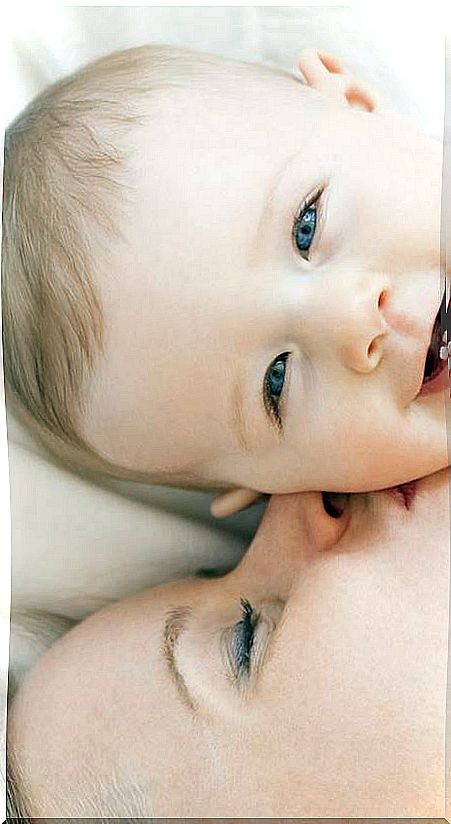I Have To Get Back To Work. How To Prevent My Child From Suffering?
It’s a difficult time. After months of permanent contact, mother and baby separate. Can we reduce the pain of absence?

The relationship between mother and child is very intense and, during the first years, almost any separation is painful for both. Well, I don’t know if separation ever stops being painful for the mother …
But why always “mother and child”? No, I am not forgetting the important role of the father, much less participating in a dark conspiracy to keep women in their homes.
To speak with absolute propriety, each child establishes a special relationship with a “primary attachment figure.” That figure can be the father, or the grandmother, or a caregiver. But in any case it is only one, and it is almost always the mother.
Since “primary attachment figure” is long and ugly, from now on I will simply say “mother.”
Take care of the most essential link
From his relationship with the mother, the child will later establish other relationships with other secondary attachment figures: father, grandparents, siblings, friends, teachers, boyfriends, coworkers, bosses, spouse, children …
The more solid and secure the relationship with the mother, the more solid and secure will be the other relationships that the individual establishes throughout his life.
This relationship between mother and child is maintained by a series of instinctive attachment behaviors, both in one and the other.
- The behavior of the newborn is completely instinctive, although with time he learns to modify it in the sense that the social guidelines mark.
- The mother’s behavior is largely learned, but underlying it remains strong instincts.
You do not take care of your children because they have explained it to you in the childbirth preparation course, or because it was instilled in you at school, or because it is recommended in magazines like this … millions of years ago, women already took care of their children , and the proof is that we still inhabit the planet.
No child can survive if someone does not take care of, protect and feed them for many years, with infinite doses of dedication and infinite doses of patience. Usually, beliefs, customs and social norms go in the same direction as instinct, and do nothing more than qualify or channel it.
But if the rules force us to live against our instincts, conflict arises.
If ever, in the care of her child, a mother finds herself thinking something like: “My heart breaks, but there is no remedy but to do it”, or “Poor thing, what a shame, but it is because of your good ”, that mother is probably fighting against her most intimate desires.
Young children cannot take comfort from this kind of reasoning. Simply put, when their instincts go one way and the world another, they get very angry.
The pain of separation
When our ancestors felt the need to get closer to their child, they just reached out. They were probably only occasionally and accidentally separated from their children. Even today, a large part of the mothers of the world carry their young child on their back throughout the day, and then sleep next to him throughout the night.
Western mothers, and not just when they work outside the home, have many more opportunities to experience separation anxiety.
In some settings, the mother who spends a lot of time with her child is criticized; she insists that she reserve time for herself, for her husband, for social activities – in which, of course, carrying a baby would be in very bad taste.
The anxiety of the mother that she must be separated from her son for a few hours, to go to the theater or the restaurant, is a common theme of sitcoms: the complex preparations, the endless instructions to the babysitter, the phone calls, the hasty return to home…
The newborn behaves the same now as a million years ago. The baby’s reaction, on the other hand, is not mediated by cultural factors. But children learn early, and adapt their behavior to the responses of the environment. For example, a baby who is systematically ignored, who is not held when he cries, ends up not crying.
It is not that he is getting used to it, or that he has learned to entertain himself, or that his anger has passed; in fact, he has given up, has been carried away by despair. A very brief separation is enough to trigger a specific behavior – “I leave the room for a minute and he starts crying like he’s being killed.”
The Strange Situation Test
The usual method in psychology to assess the mother-child relationship, around one year of age, is the so-called “strange situation test”. It basically consists of the mother leaving the room in which she is with her son while he is distracted, leaving him in the company of a stranger, staying out of the room for three minutes, and then entering again.
The child with a secure attachment
As soon as he notices the mother’s absence, he looks for her, goes to the door, often cries. When the mother comes back in, she greets her, walks over to her, quickly calms down, and continues playing.
Children with an insecure or anxious attachment
They are classified into two groups:
- Elusive or avoidant: they seem calm while the mother is away, and deliberately ignore her when she returns, disguising their own anxiety
- Resistant or ambivalent: they become upset when the mother is not there, but when she returns they are aggressive towards her and take a long time to return to normality.
Many people confuse the symptoms. They call “capricious” or “mad” the child who has a normal relationship with his mother and praise the one who shows an elusive attachment as shown by the phrases, “Good, he stays with anyone”, “Does not bother”, “He entertains himself “…
Children with a secure attachment may show avoidant or ambivalent behaviors when the mother returns from work. They can ignore it, denying the greeting and the glance; or hang on like a limpet and demand constant attention, or even be aggressive.
Your child is not angry with you; is angry about your absence
It is very likely that they alternate the three behaviors in rapid succession. It is important for parents to understand and recognize that these behaviors are normal. Do not take it personally, your son has not stopped loving you or anything like that.
How do we respond?
Getting angry, returning disdain with disdain, trying educational techniques to modify the child’s behavior, is nothing more than a waste of time. Since you can spend a few hours with him, at least spend those hours paying attention and affection, to show him that you still love him the same even if he is angry.
Take him in your arms, play with him, recharge your batteries before the next separation.
How does the baby respond?
The intensity of the response to separation depends on many factors:
- the age of the child,
- the duration and frequency of separations,
- the person who replaces the mother
- and, most important of all, the quality of the relationship with the mother.
The best medicine to soften the blow of separation is to give the child as much affection and physical contact as possible during those first months in which the mother can be with the little one.
After three years, and especially after five, that good start bears manifest fruits. It is then the children who had had a more intense and affectionate relationship with their mother who are best adapted to the separation.
Because the unlimited affection of the first years has given them the confidence in themselves and in the world that they need to start the path of independence.
Now they are really happy at school, and it is true happiness and not just apathy, a happiness based on the assurance that their mother will return and will continue to love them.









